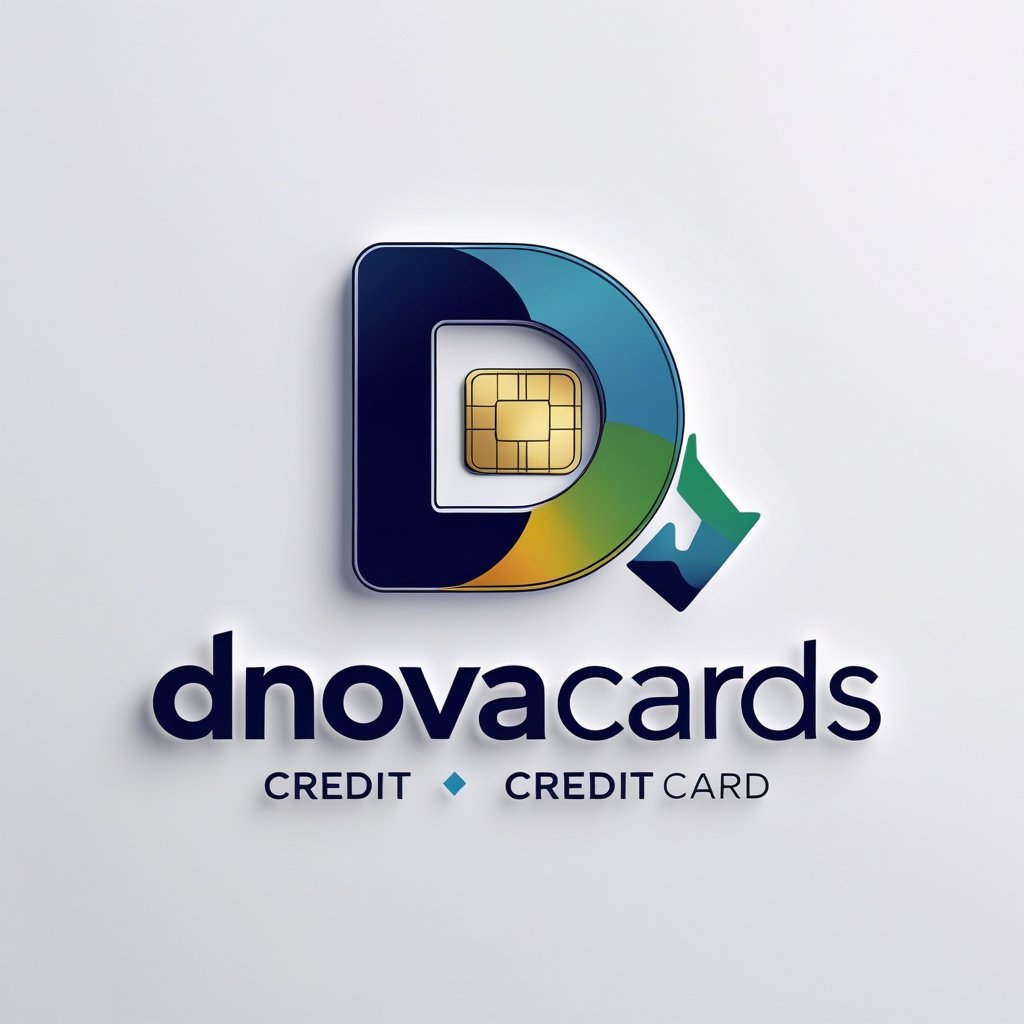To stay competitive in the e-commerce market, it is crucial for businesses these days to have versatile, fast, and secure payment processing systems. Accepting payments, including credit card payments, becomes really easy with Sellix, a comprehensive e-commerce platform.
Whether you are a freelancer, a micro business owner, or an online seller, setting up a payment gateway that enables credit card payments should be a priority. This article helps to set up Sellix integrations, through to setting up credit card payments in a secure manner.
You may have heard about the reputation that comes with using Sellix, which is that of easy-to-use integrations, but there’s a lot more to it.
In this article, I will show the readers every ins and outs about how to perform the credit card transactions using Sellix, providing a step-by-step guide and enabling them to avoid making mistakes. Let’s begin!
What Are Sellix Free Integrations?
Add-ons such as payment processing, customer management, and automation tools are some of the things that can be integrated into an online store using Sellix’s integrative features. These integrations are available in both free and paid versions, with the free ones having basic features which are adequate for newly established firms.
Free integrations allow you to
- Make it possible to process payments through credit cards, PayPal and various other electronic currencies such as Bitcoin.
- Bring a variety of invoices, product deliveries and even customer alerts under automation.
- Combine your shop with email marketing, which can help you to handle your campaigns better.
Understanding Sellix Integrations
With Sellix, you can connect multiple third-party platforms and other services, which provides you with options for running your business. These integrations allow you to automate key functions, lower the chances of human errors and provide better service to customers. Some of the most common integrations available with Sellix are:
- Payment Processors: Accept payments easily from almost anywhere as Sellix has numerous credit card verification systems such as PayPal, Stripe and others.
- CRM Tools: Connect integrations with tools like Mailchimp as well to synchronise your customer data and manage campaigns and communication.
- Accounting Software: Simple bookkeeping can be done by using integration with QuickBooks application software.
- Automation Tools: Automate the sending of receipts, refunds, order management with tools like Pabbly Connect or Zapier.
All integrations are meant for the purpose of saving effort and time. For example, you can capture a market by using one of the most common systems worldwide as PayPal, while with automation systems like Pabbly Connect it is not needed to process each transaction by hand.
Benefits of Using Sellix Free Integrations
Cutting down on costs is perhaps one of the most important things that a business owner would want to do, especially when they are just starting out their operations. If that’s you, this is where Sellix comes in.
- Cost Efficiency: And speaking of everything else, let’s now move onto a critical concern: cost efficiency. When you do not have to pay fees upfront due to the use of Free Integrations, you then only have to worry about transaction fees and nothing else, officially making it a cost-effective measure.
- Simplification: Paying off expenses such as transaction fees, which fall under overhead costs, is a hassle if you do go through the engendering setup. Which is why it is important to avoid unnecessary costs and automate the tracking of invoices and delivery tracking by utilising Sellix’s numerous integrations.
- Security: What’s even better is that since Sellix was designed with security measures in place to protect your data, using their free integrations brings even more benefits. Both PayPal and Stripe come included with built-in security features so your business’s and your clients’ information are perfectly safeguarded.
In other words, it serves a greater purpose: simplifying the task at hand. These cost-effective integrations provide you with an opportunity to focus on enhancing your business without worrying about the payment processes or security.
How to Get Started with Sellix Integrations
Even if you are unfamiliar with online payments, setting up Sellix integrations is not rocket science. Here’s how to set up Sellix for Credit Cards integration in a systematic way:
1- Create Your Sellix Account
If you do not already have a Sellix account, it can be opened without any cost. First, you need to submit some fundamental commercial information such as your shop’s title and email address on their website.
2- Link Your Credit Card Processor
Once you’ve completed your registration, locate the Payment Settings button on your dashboard. Now, here you can choose an option from one of the payment processors’ partners such as PayPal, Stripe, and many others.
For Credit Cards, you would have to choose a processor that encumbers your business, such as for accepting Visa or MasterCard payments you may have to acquire Stripe.
3- Configure Your Payment Settings
Once the two systems or processors have been integrated, the next step is to set up your payment settings options. A broad list which includes the preferred currency, relevant taxes, refunds, and chargeback systems & policies.
4- Test Your Payment System
Prior to the actual payment to start receiving funds, check whether the processors’ settings have been correctly set by making a minor payment to the account via your credit card. Thus, resolving all issues and bugs before they appear when your customers start making payments.
How Do Sellix Free Integrations Help in Accepting Payments?
Business entities are able to make their payment systems more efficient through Sellix’s free integrations. The free integrations handle a customer’s endorsement all through to the receipt sent to them, making an easy deal for both clients and you. Here’s how they help:
- Multiple Payment Methods: Integrating payment processors within Sellix allows you to accept credit cards, PayPal, and any other form of payment, thus solving the problem of which method a customer can use. This is crucial as it enables customers to pay using their preferred method, significantly increasing conversion rates.
- Automated Invoicing: With this feature, a customer invoice is automatically generated and sent to the email once a customer has completed payment. This reduces your manual work and ensures that all transactions are well recorded at the very least.
- Secure Payment Processing: All payments made in Sellix and any of the payment processors such as Stripe and PayPal used through Sellix are integrated, thus making all payments encrypted and reducing any chance of fraud, making every transaction secure.
Payment Methods Supported by Sellix
There are different forms of payment supported by Sellix to help you have a wider scope of estimating the level of possible customers to pay. Below is a summary of payment methods you are likely to receive the most frequently.
- Credit/Debit Cards: In the case of Visa, American Express, and MasterCard, through the processor integration with Sellix and Stripe you can receive major credit and debit cards.
- PayPal: One of the most reliable options, PayPal lets users make a payment without having to enter card details since the payment is done with just the click of a button.
- Cryptocurrency: If you are targeting the crypto market, Sellix also provides the option to accept Bitcoin, Ethereum, and other popular cryptocurrencies.
All these alternatives have their strengths and weaknesses. For instance, while credit card transactions do have wider acceptability, PayPal would be easier to use for clients based overseas.
Step-by-Step Process to Accept Credit Card Payments with Sellix
So, if you’re wondering about how to accept credit card payments on Sellix, here are the steps you can follow:
Step 1: Set Up Your Sellix Store
The first step to selling items on Sellix, after creating an account on Sellix, is to create a store. This includes adding items, setting prices and shipping costs as well.
Step 2: Link Your Payment Processor
While still on the admin panel, click on the Payment Settings. Then connect the Stripe account (or any other preferred processor) that will allow you to process your payments. In this case, you’ll have to provide your preferred API keys to link your processor with Sellix.
Step 3: Customize Payment Options
Regarding how payment methods are shown, kindly choose which credit cards you will accept payments from, then add your preferred currency. If there’s sales tax, you can also add any additional fees once capable.
Step 4: Conduct a Test Transaction
This step is very crucial; ideally, persons not in the chain of command (executives of the team) or outside, for the sake of testing how your payment system works and if everything is in place should the person complete the purchase of one of the products.
Step 5: Start Accepting Payments
Assuming that you have set up everything and have also tested it. You can easily receive payments while selling items in your store using credit cards.
Recurring Fees: What You Need to Know
One of the major highlights of working with Sellix is that their pricing is straightforward, meaning that you will know the exact amount you are spending. Below is a breakdown of typical fees:
- Transaction Fees: Based on the mode of payment, Sellix charges a processing fee of between two to four percent or sometimes a fixed small charge on every transaction made.
- Integration Fees: Although plenty of integrations come at no cost, some premium features or third-party services may attract a fee.
- Subscription Costs: Should you select Sellix’s premium plan to access more functions, then you will incur a recurring monthly subscription. Nevertheless, even with the basic plan, the user can process credit card payments seamlessly.
The chargeable fees are acceptable and are comparable to those of other e-commerce sites.
How to Automate Your Business with Sellix Integrations?
Automation has changed the game for businesses and everything became easier using Sellix to carry out different tasks in making payment and transactions.
- Automated Invoices: As a client purchases a product, Sellix generates invoices automatically and forwards them to the client.
- Product Delivery: After payment is made, automating the delivery of software or eBooks can be arranged.
- Refunds and Returns: Make the refund process automatic by determining factors which, when met, grant automatic approval based on the return policy terms.
You can automate these processes further and reduce time wasted doing them by integrating them with Pabbly Connect services and ensuring that everything is well done.
Setting Up Automation for Your Shop
Follow these simple procedures to begin automation for your Sellix store.
- Choose Your Automation Tool: If you wish to use Zapier or Pabbly Connect, open an account and integrate it with Sellix.
- Create Workflows: Begin building workflows which include welcome emails sent after a purchase or a signal sent notifying you about a successfully processed payment.
- Test Automation: Carry out a test to check if your work is completed as it was expected to be done. Check that emails are sent, invoices are created, and products are delivered.
Using Pabbly Connect as an Integration Tool
Pabbly Connect assists in streamlining workflows between Sellix and different platforms as well. Setting up triggers for payments, emails, etc., is possible. Here’s how.
- Sign Up for Pabbly Connect: Sign up on the Pabbly platform.
- Link Sellix to Pabbly: Connect your Pabbly with your store via the Sellix API.
- Create Automation: Automate monotonous activities such as sending a thank you note to clients and suitcase contact updating once the deal is closed.
Benefits of Automation for Your Business
Automation of my business does not only save working hours but also cuts down errors, enhances customer experience, and ensures that payments are always made accurately. With the best automated solutions, you can concentrate on your business growth rather than the mundane business work.
1. Time Savings
The time saved is arguably the most evident and important advantage of automation. Everyday tasks do not require hours to get done as they can be handled by automation tools with ease. Whether it is generating invoices, writing confirmation emails or updating the stock levels, automation essentially allows you to concentrate on more significant aspects of your business, such as marketing, product growth as well as maintaining and managing clients.
For example, you can combine Pabbly Connect with other applications to create a rule which automatically sends thank you emails to customers upon payment or even send the digital product once a payment is successfully made. Such simple automation reduces the amount of work that you have to do manually by hours every week.
2. Reduced Human Error
It is no secret that humans can be the weak link, especially because they can commit errors that may inevitably impact the business. Data entry mistakes such as putting figures into the wrong location, confirming and sending emails containing the wrong information, or omitting crucial information are just some of the things people can do. These small errors can interfere with a customer’s experience and image of the business.
In processing payments, for example, automation guarantees that the proper invoice with the adequate particulars around it, the exact cost is applied and the payments are properly recorded. Automation tools say that there are fewer chances of failing to perform an important task such as modifying the stock levels after a given product is sold out.
3. Improved Customer Experience
In this era of competitiveness, customers want services that are done quickly, efficiently and are customised to their needs. Automation can assist you in satisfying these demands by enabling 24/7 uninterrupted transactions and offering customers regular updates allowing them to free up their valuable time.
For example:
- Instant Receipt Generation: Automation can send a receipt as soon as an order is paid automatically upon completing a purchase. This enhances client confidence as he/she receives a week of product purchase without any cutoff.
- Automatic Shipping and Tracking Notifications: They inform the customer once an order has been placed, of its shipping details alongside the package tracking number, allowing customers to be well informed about the whereabouts of his/her order.
- 24/7 Communication: Even when away from the office, one can also use email auto responders or chat bots to tend to customers’ requests hence improving customers’ satisfaction and loyalty towards the company.
Automation of vital exchanges enables a customer to have a good impression of the company further encouraging them to make future purchases and make transactions seamless and professional.
4. Increased Efficiency
Every business will agree that efficiency is the buzzword in today’s operations. Once handled automatically, processes will be completed quickly and in a more uniform manner. For instance, integrating with PayPal or Stripe gateways means only sending notifications to customers after the payment has gone through, making payment processing smoother.
As your business scales, automation will cost up to X2 operations if compared to non-scaled situations. Even as your store gets larger and more orders, emails, and payments come in, automation ensures the workflow components that require effort from humans are easily handled. Expansion of your business can be achieved without constructing additional management systems.
5. Better Cash Flow Management
In manual processes there is an increased risk of lost payments or misappropriated funds. As long as automated invoicing and automated payment reminders together with automatic and auto-billing for subscriptions are utilised would help this risk tremendously.
Let’s say because of difficulty to collect payments for subscription based services or monthly payments, the subscription is unused hence losing an income stream. Fortunately, this can be avoided by auto-billing subscriptions which means at renewal date it would be automatically billed. Payments that come 60 days late can also be difficult to recoup without at least calling the customers. Auto-reminders help significantly by sending messages to these customers and any lost income will not require manual chasing.
6. Reduced Operational Costs
By automating the tasks especially of human resources, you allow some more strategic areas to be worked on. A company may not need to employ more people to execute monotonous work; rather, the use of automation can cater to such work, thus minimising the manual labour and expenses incurred in the process.
Further, as human errors are minimised, and payment systems are put in place, automation also inhibits expensive blunders such as having clients overcharged or not receiving a refund. Tools supporting automation such as Sellix’s integrations with Stripe and PayPal will enable the reduction of errors while processing transactions, which may lead to those seeking chargebacks, incurring additional costs in dealing with them.
7. Consistency and Accuracy
With the use of automation, any task can be performed regardless of time and place according to the ‘procedure’ set forth. Sending an order confirmation via email, making a transaction via credit card and updating the system in terms of stock, shall guarantee the prevention of any discrepancies.
For instance, automation shall provide the discount codes, the taxes and the shipping options that were specified by consumers at any time without having variances due to the ways you have programmed them. Such precision in supporting automation is vital in ensuring the image of the brand is intact and that consumers can build trust around the brand.
8. Improved Decision-Making
As previously noted, organisations can become more automated. Tools capable of capturing payment transactions, consumer profiles and inventories provide useful market research that otherwise would take several hours to compile. These findings can subsequently be applied to develop sound business strategies.
For example, tracking your payments automatically allows you to pull report extracts subjecting them to various analyses with respect to trends such as the most sold products, the most common mode(s) of payment and many others. This, in turn, helps to fine-tune your marketing, management of stock and pricing of your products.
My Opinion Credit Card Transaction
I hope that if I had asked you the question to tell me everything you would ever need to know about employing Sellix for credit card transactions, from integration, setup, and pulling up all the automations in a sequence that best allows you to work properly, you would have managed to meet my expectations. The combination of the flexibility of the platform along with its great payment solutions and excellent security allows businesses of all sizes to make use of it effectively.
I must add that by using the integration and automation tools of Sellix, you can get paid without spending a lot of time or getting into the details.


















2 Comments
View Comments